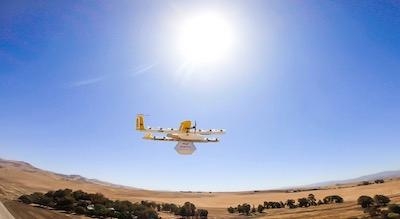Thu, Aug 04, 2022
Airworthiness Certification Replaces Weight Consideration in Accident Criteria as Board Prepares for UAV Delivery
The NTSB has addressed shortcomings in the previous definition of “unmanned aircraft accident” in a recently published rule to go into effect August 15.

The change is designed to help to address recent developments within the industry that have made the prior weight-based definition somewhat lacking when determining the board's response to aircraft accidents. Under the older definition, an “unmanned aircraft accident” was an occurrence associated with the operation of an unmanned aircraft that takes place between the time that the system is active, is associated with death or serious injury, or in which the aircraft is substantially damaged. A key dissatisfaction with the definition lay in the requirement that the UAV have a MGTOW of 300 lbs or greater, an addition that sought to limit the level of busywork sent to the NTSB after millions of drones made their way into American homes.
In May of 2021, the NTSB issued an NPRM proposing a change that would eliminate the weight requirement, instead replacing it with an airworthiness certificate or approval requirement. The NTSB said that the weight threshold is “no longer an appropriate criterion because UAS under 300 lbs are operating in high-risk environments, such as beyond line-of-sight and over populated areas. The NTSB explained that the new proposed definition would improve their ability to respond to significant safety events and advance the state of the industry as a whole, particularly in light of the expanding field of drone-based delivery services. Commercial operations using drones have been a point of concern from the public comment period, with the NTSB’s release quoting a citizen’s desire for UAS operations to be “subject to the same scrutiny as commercial manned operations.”
“A substantially damaged delivery drone may uncover significant safety issues,” says the newly released final rule. “The investigation of which may enhance aviation safety through the independent and established NTSB process. This amended definition will treat a UAS with airworthiness certification in the same manner as a manned aircraft with airworthiness certification, thereby enabling the NTSB to immediately investigate, influence corrective actions, and propose safety recommendations.”
The rule in its entirety has been published to the Federal Register under docket number NTSB-2021-0004.
More News
He Attempted To Restart The Engine Three Times. On The Third Restart Attempt, He Noticed That Flames Were Coming Out From The Right Wing Near The Fuel Cap Analysis: The pilot repor>[...]
Make Sure You NEVER Miss A New Story From Aero-News Network Do you ever feel like you never see posts from a certain person or page on Facebook or Instagram? Here’s how you c>[...]
From 2009 (YouTube Edition): Leading Air Show Performers Give Their Best Advice for Newcomers On December 6th through December 9th, the Paris Las Vegas Hotel hosted over 1,500 air >[...]
Aero Linx: NASA ASRS ASRS captures confidential reports, analyzes the resulting aviation safety data, and disseminates vital information to the aviation community. The ASRS is an i>[...]
“For our inaugural Pylon Racing Seminar in Roswell, we were thrilled to certify 60 pilots across our six closed-course pylon race classes. Not only did this year’s PRS >[...]
 NTSB Final Report: Rutan Long-EZ
NTSB Final Report: Rutan Long-EZ ANN FAQ: Turn On Post Notifications
ANN FAQ: Turn On Post Notifications Classic Aero-TV: ICAS Perspectives - Advice for New Air Show Performers
Classic Aero-TV: ICAS Perspectives - Advice for New Air Show Performers ANN's Daily Aero-Linx (06.28.25)
ANN's Daily Aero-Linx (06.28.25) Aero-News: Quote of the Day (06.28.25)
Aero-News: Quote of the Day (06.28.25)



